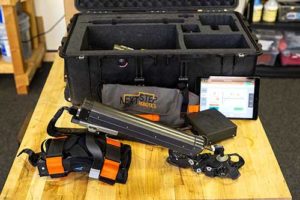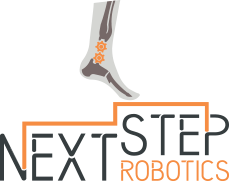 For years, foot drop has been a widespread problem that affects millions of people each year. Foot drop is a painful disorder caused by weakness or paralysis of the muscles involved in lifting the front part of the foot. Common causes of foot drop might include nerve injury caused by damage to the peroneal nerve, a nerve root injury known as a pinched nerve, muscle or nerve disorders such as muscular dystrophy, or brain and spinal cord disorders like multiple sclerosis or stroke.
For years, foot drop has been a widespread problem that affects millions of people each year. Foot drop is a painful disorder caused by weakness or paralysis of the muscles involved in lifting the front part of the foot. Common causes of foot drop might include nerve injury caused by damage to the peroneal nerve, a nerve root injury known as a pinched nerve, muscle or nerve disorders such as muscular dystrophy, or brain and spinal cord disorders like multiple sclerosis or stroke.
Common symptoms of foot drop include:
- Inability to hold footwear – Loosening of footwear is a result of foot-dragging or toe-scuffing due to foot drop.
- Tripping – Weakness in the muscles of the foot and toes may result in frequent tripping.
- Falls – It is common to lose balance, stumble, and fall with a foot drop. Falls occur due to the inability to properly lift the front part of the foot and toes while walking.
- High steppage gait – This type of walking pattern is characterized by raising the thigh in an exaggerated fashion, such as climbing stairs. A high steppage gait is attempted to prevent the toes from abnormally hitting or scraping the floor while walking.
- Limp foot – The affected foot may flop away from the body, making it difficult to climb stairs.
- Numbness – Loss of sensation may occur on the lower leg or the foot,
- A decrease in muscle mass – Weakening of the muscles may cause the muscle mass to reduce, especially when foot drop is caused by certain autoimmune conditions, such as multiple sclerosis.
NextStep Robotics has created a cutting-edge solution to help those affected by foot drop. The NextStep Robotics team has developed a robotic device (AMBLE) for persons with foot drop that employs state-of-art hardware and bioinspired controls to train the foot muscles to lift the foot adequately to avoid toe drag and make contact with the ground correctly and safely to avoid foot slap. NextStep Robotics’ robotic solution is the first ever rehabilitative technology that over time, (re)teaches the impaired foot to overcome the debilitating effects of foot drop. It is also the first lower limb device that allows complete customization of robotic therapy as per each patient’s needs and ongoing recovery, unlike anything else available to physical therapists today.
How Does Our Solution Work?
Once the NextStep Robotics device (AMBLE) is attached to the foot, it works as a semi-autonomous trainer to help the patients restore their natural gait. As each step is taken, the device detects the toe-off event and provides active assistance in lifting the foot if the patient is unable to adequately do so. The device then makes corrective adjustments for subsequent steps. As the patient gradually improves their mobility, the device assists less and less to promote autonomy and independence. This device is a remarkable combination of principles of robotics engineering, neuroscience, and physical therapy that benefits any patient who suffers from foot drop.
The Ease of Use with NextStep’s Solution
More importantly, the NextStep Robotics’ robotic therapy device is simple to operate. The device can be donned and doffed in under 5 minutes by a trained physical therapist.
Our experience shows that using the device causes no adverse events including skin irritations or abrasions. The device automatically generates training parameters that are customized to each patient’s gait pattern. This saves precious time in the clinic, allowing physical therapists to focus more on the verbal interactions with each patient and giving them the attention they deserve.
Further, this causes labor costs for physical therapists to decrease, as well as less money spent on rehabilitation facilities or even the number or duration of hospital stays that would result from foot drop related falls.
Further Applications of NextStep Robotics’ Solution
Not only does this advance the limits of robot-aided movement therapy, NextStep Robotics’ solution can also be used as an exercise device and as a unique measurement tool. The device can be used as passive, bedside or seated stretching device for persons in the acute phases of stroke prior to transitioning to inpatient physical therapy. This allows patients to receive state-of-art robotic therapy across the spectrum of recovery and deficit severities. As a measurement tool, the device uses its sensor-based measurements to generate a unique Robot Report Card that consists of quantitative mobility and ankle outcomes. The fact that the NextStep Robotics device can be used as a therapy, exercise, and measurement device demonstrates how unique this device truly is. Because this device is designed to be used for exercise, the goal is for foot drop patients to improve their mobility to an extent such that they will eventually not need the device at all.
Discover More About NextStep Robotics’ Solution to Foot Drop
NextStep Robotics has created a practical and innovative technological solution for foot drop that integrates robotic therapy into conventional care (physical therapy). The NextStep technological solution to foot drop is unlike anything else available on the market. Find out how NextStep has revolutionized the solution to foot drop by completing the convenient online form for more information.

